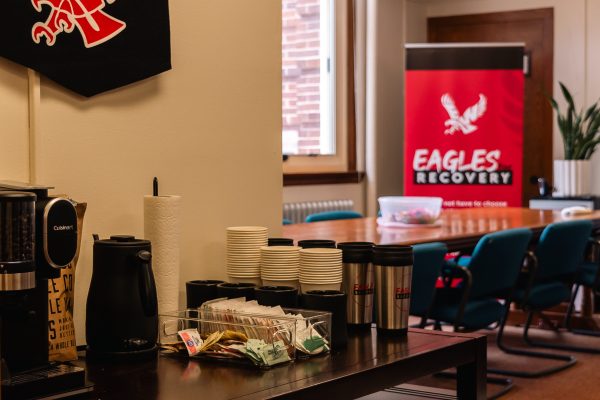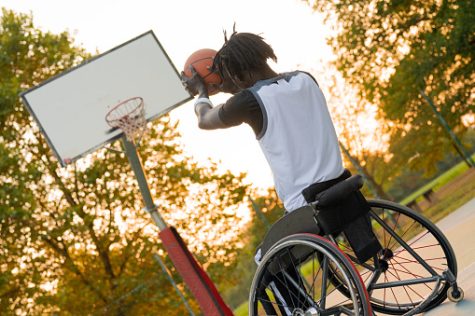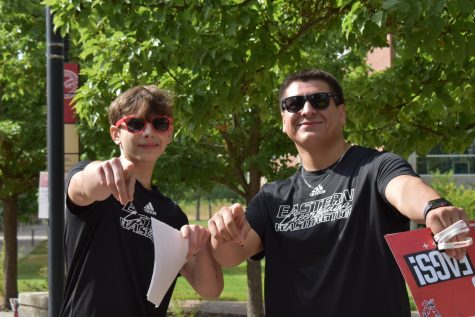Sunglasses and hats protect from sun
May 29, 2013
Many students soaking up the sun might want to keep in mind a few tips before they damage their skin.
Prolonged sun exposure, according Carol Gähl, student health coordinator and physician’s assistant, causes dark spots, wrinkles, heat exhaustion, heat stroke, dry hair, sunburn and, in more serious cases, cancer.

To protect themselves from the sun, students should wear big, floppy hats and sunglasses.
Ultraviolet rays, or UV rays, from the sun cause this damage and Gähl encourages sunscreen year-round because even in winter there are UV rays. The snow reflects 80 percent of UV rays from the sun, according to The Skin Cancer Foundation.
Robin Chavez, former Clinique skin care consultant, agreed, and said the sun has a way of finding people, which is why wearing sunscreen all the time is important.
“The sun penetrates through windows, especially those of your car,” said Chavez.
When picking a sunscreen, according to Gähl, look at the sun protection factor, or SPF number. She said most research recommends an SPF with a minimum of 30.
Gähl said it is easy to wear sunscreen year-round because SPF 15 can be found in most makeup and lotions. She said SPF 30 in makeup is better than SPF 15 because it prevents premature wrinkling and aging of the face.
An ounce of sunscreen should cover all exposed parts of the body.
“A stick of butter is 4 ounces and if you cut it into four slices, one of those would be about an ounce,” said Gähl. “So it’s a pretty healthy dose. You are talking two or three palm fulls to get a full dose.”
Sunscreen needs re-application every two to four hours. Many sunscreens are waterproof and sweat-proof, which is helpful because they will not melt off, said Gähl.
Sunscreen is also not as effective as it ages. Gähl suggested buying smaller quantities and buying new sunscreen each year.
She said some students forget about certain areas such as underneath straps, their décolletage, border of their neckline, feet, ankles, hands or tops of earlobes. Chavez said lips are often neglected.
“Lips can also burn and become damaged,” said Chavez.
Chavez said lip balms are available with SPF. The Skin Cancer Foundation said to look for an SPF of 15 or higher in lip balm as lips are very sensitive.
Gähl said to avoid dark colored clothing because they absorb heat. White or light colors reflect heat. Clothing that is breathable and wicks moisture away from the body is best for the heat.
Students should avoid metal earrings as Gähl has seen a few sunburns from them on ears. The reason is because metal absorbs heat.
“When low-rise jeans and short tops were in fashion, I actually saw burns from the buckles on people’s skin as those buckles kind of stick up [and rub against the skin].”
Handheld straw fans can be a fashionable look, according to Gähl, and umbrellas create shade, which is beneficial because it allows students’ heart rates to go down while they rest.
“If you can’t stay in the shade, what’s the next best thing?” said Gähl. “A big floppy hat.”
It is important to wear sunglasses because UV rays can cause sunburns on the retinas and can be prematuring to eyesight loss. It is very painful, said Gähl.
Gähl said higher levels of melanoma are being found in young people, as opposed to previous years, because tanning is more fashionable. She suggests that anyone who spends a significant amount of time in the sun get their skin checked once a year, and those who have a family history of skin cancer to get checked every six months.
Students who cannot stay away from the tan look, according to Gähl, can use creams and lotions that temporary darken skin. She said those are pretty safe and look more natural nowadays. Chavez suggested wearing plastic gloves to avoid “unnaturally tan hands.”
Or Gähl said to start a new trend of having creamy skin.
“If we all stayed out of the sun we would have that skin we had when we were 5 or 6 or 2 [years old],” said Gähl.




















John • Jun 22, 2015 at 3:41 pm
When I was in my 20s, I virtually never used anything to protect myself from the sun–ever. But now it’s totally different–if I’m outside, unless it’s before 8AM or after 6PM, I always wear a big hat and sunglasses. I’ve seen what too much sun can do over time to people’s skin once they’re older, and I’m not about that at all. People might make fun of my hat, but oh well. Too much time in the sun adds up!